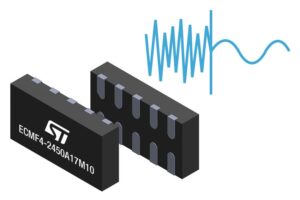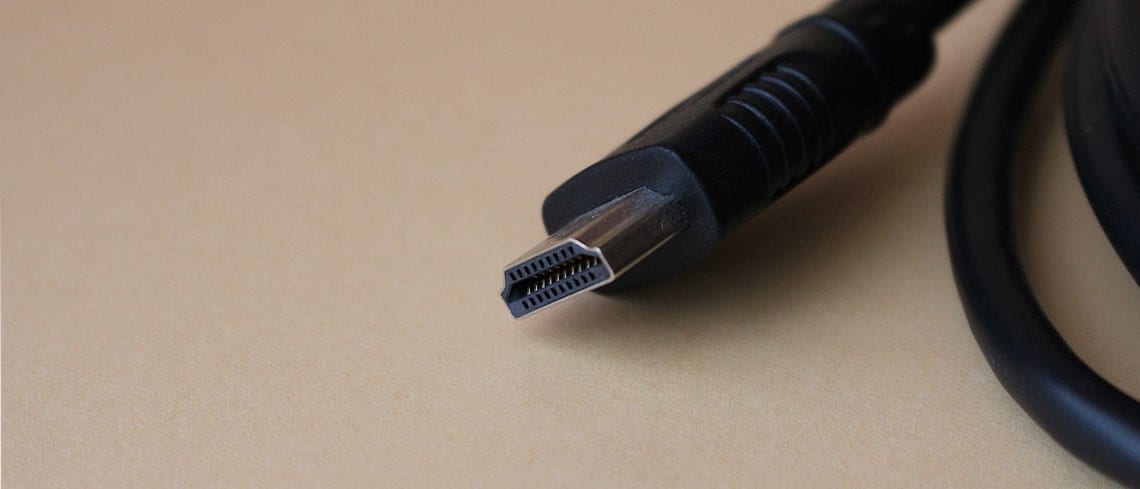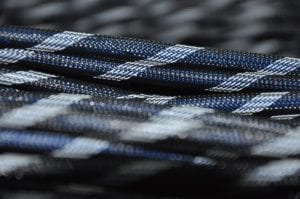Our integrated solutions for HDMI ports against electrostatic discharge protection (ESD), common mode filtering and control line functions are so popular, you can find them in TVs, game consoles, multimedia boxes, and many other large-scale applications. They offer a better experience by allowing the use of longer and less expensive cables, without a loss of functionality or image quality. Our latest HDMI2C2-5F2, HDMI2C4-5F2 and the ECMF4-2450A60N10 provide unique optimized integration.
The HDMI2C4-5F2 protects the source’s (the signal transmitter, such as a video player) control line, which communicates specific information to the sink (the signal receiver, like a TV, among others) such as the video’s refresh rate, through an I2C protocol. The HDMI2C2-5F2 has a similar role but protects the sink. Finally, the ECMF4-2450A60N10 guards the Transition Minimized Differential Signaling (TMDS lanes) or Fixed Rate Links (FRL), which transport video data.
The HDMI standard received substantial updates that drastically increased its bandwidth. HDMI 1.4 offered 10.2 Gbps while HDMI 2.0 could reach up to 18 Gbps, and HDMI 2.1 shot up to 48 Gbps. As the industry tries to popularize support for 4K HDR content at 120 Hz for video games and prepares for 8K images at 60 frames per second as well as 10K videos at 30 fps, the requirements on the HDMI’s datalines and control lines are ever more important, and protecting them becomes increasingly critical. Indeed, these new speeds are possible because the standard now uses four FRL, each with their own clock, as a replacement to the traditional TMDS lanes. This new signaling technology is partly the reason why we are able to get 12 Gbps per channel, or 48 Gbps overall, but it demands new levels of protection.
Protection Against Bad Cable
There is currently a severe HDMI cable issue. Enthusiasts know that consumers don’t need to pay hundreds of dollars to get good quality cables, as some might suggest. However, there are unfortunately quite a few cables that are of inferior quality, and unlike what some may believe, they are sometimes widely available on popular online retailers’ website. For instance, the lack of shielding or a long HDMI cable can lead to massive degradation of the signal on the I2C bus. To counteract this problem, our HDMI2C2 and HDMI2C4 devices offer a dynamic pull-up that will reshape the signal to rebuild the data link. We are the only company to offer such a solution for these types of devices, and it’s thus a unique mechanism that enables consumers to use lower-quality cables without a noticeable loss of picture quality.
Similarly, our HDMI2C2 and HDMI2C4 have a range of protections against rogue currents. For instance, our 5 V & DCC back drive protects against currents that may inadvertently flow from a television to a box or console through the HDMI cable. Additionally, we also offer support for low-voltage chipsets thanks to our signal conditioning mechanisms that use level shifters to oscillate between 1.8 V and 5 V on the I2C and HPD lines. It also means that designers can use our devices with confidence even if they don’t have a specific HDMI chipset in mind early in the prototyping phase. Indeed, there are a lot of different models out there, but whether they use a traditional device or a lower-voltage model, they already know that our level shifter will guarantee proper HDMI standard compliance.
ESD Protection for HDMI Dataline and Wi-Fi Interferences

After protecting the control lines against cables, it is also essential to protect the HDMI chipset. Hence, since our ECMF4-2450A60N10’s first priority is to guard against electrostatic discharges and to offer consumers and manufactures a greater peace of mind, we exceeded the IEC 61000-4-2 standard to protect against 25 kV when it comes to air discharges and 10 kV for discharges at the pins. Additionally, we manage to fit everything in a thin package that’s only 0.5 mm thick, and that takes little space on the PCB (1.35 mm x 2.2 mm), because we understand that design considerations are tight, especially when it comes to tiny boxes and HDMI sticks.
Indeed, the reduction in sizes of these consumer sticks led to another problem that wasn’t really an issue five to ten years ago. The Wi-Fi antenna is now so close to the video connector, and the HDMI standard is now so fast, that the latter produces interferences that are problematic for the former, especially in sticks where components are so close to one another. Very simply, the HDMI transfers can potentially interfere with the Wi-Fi signal, and the network controller could lose chunks of data altogether. As a result, we are the first company to include a common mode filter with dataline protection devices capable of canceling nefarious interferences that could perturb WLAN frequencies at both 2.4 GHz and 5 GHz. We are thus making sure that manufacturers can take advantage of the latest Wi-Fi standards without worrying about their HDMI dataline.
Experiment With One-of-a-Kind Integrated Solutions Today
The fact that we integrated all these features in a single device for HDMI solutions is probably the most surprising aspects of them all. Indeed, the idea of a common filter or dynamic pull-up is not new, but until now, manufacturers had to add those features through the installation of extra components, besides those that they were already using for ESD protection. By building them on the silicon, designers can create smaller products, thus pushing the boundaries of what they can offer to their customers. Unlike what many may think, these devices are not commodities. They are the parts that will enable engineers to use the latest Wi-Fi protocols, or that will make sure companies don’t have to worry about customer satisfaction, even if they don’t ship an expensive HDMI cable. Indeed, these parts are small, but they can make the difference between a successful launch or a PR nightmare.
Those interested in testing our HDMI2Cx parts can start with our STEVAL-CCH003V2, an evaluation kit that will show them how to quickly become compliant with the HDMI 2.1 standard. Its mainboard includes two HDMI connector, while the daughterboard ensures designers can test all HDMI signals as LEDs will light up when certain protections activate.

